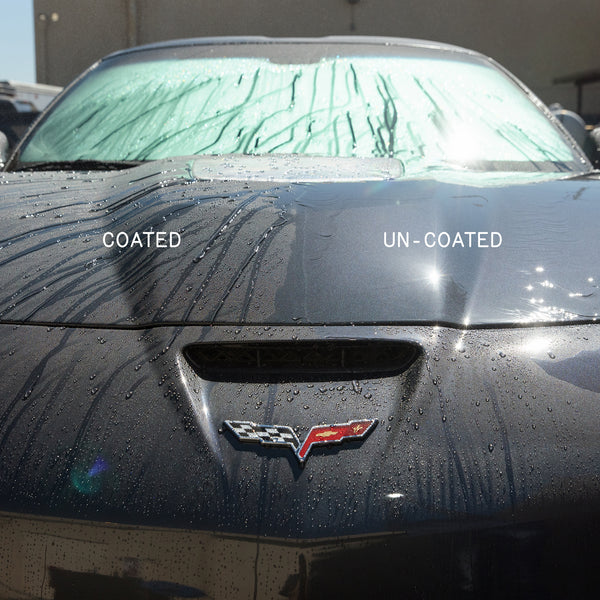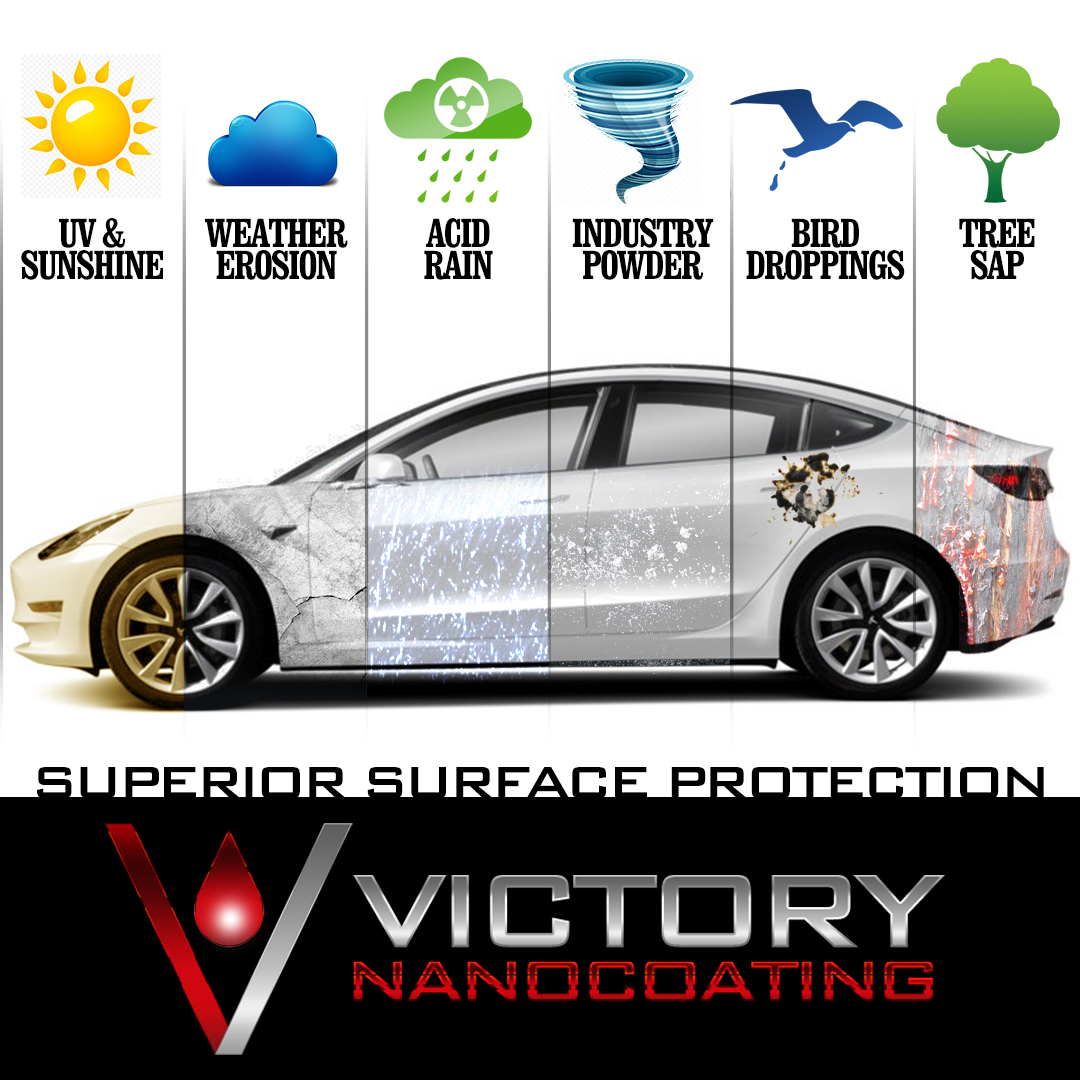Why Ceramic Coating Is Necessary for Maintaining Your Car Looking New
Why Ceramic Coating Is Necessary for Maintaining Your Car Looking New
Blog Article
Checking Out the Science Behind Ceramic Layer and Its Influence On Automobile Describing
The application of ceramic finish in automobile outlining stands for a considerable development in automotive treatment, rooted in its innovative chemical homes, mostly silica dioxide and titanium dioxide. Understanding the science behind these products reveals not only the safety benefits they supply but likewise their role in improving a vehicle's aesthetic long life. As we discover the intricacies of the application process and the lasting implications for vehicle upkeep, it ends up being clear that the choice of ceramic finishing can basically change one's approach to cars and truck care. What factors to consider should be made prior to committing to this transformative option?
What Is Ceramic Coating?
Ceramic finish is a modern-day option that has acquired popularity in the automobile detailing sector for its capacity to offer lasting protection for lorry surface areas. This advanced protective layer is normally composed of silica dioxide (SiO2), which develops a solid bond with the vehicle's paint, producing a sturdy shield against ecological contaminants. Unlike conventional wax or sealers, ceramic coatings provide superior resistance to UV rays, chemical spots, and physical abrasions.
The application of ceramic layer involves a precise procedure, where the lorry's surface area is thoroughly cleaned up and sanitized prior to the covering is applied (Ceramic Coating). As soon as cured, the finish boosts the automobile's gloss, depth, and clearness, giving a showroom-quality finish that lasts for several years. Among the key advantages of ceramic finishing is its hydrophobic residential or commercial properties, which ward off water and dust, making upkeep less complicated and reducing the frequency of washes
The Chemistry of Ceramic Finishing
A basic facet of ceramic layer lies in its chemical structure, mostly identified by the visibility of silica dioxide (SiO2) This substance is integral to the formation of a durable, protective layer that bonds chemically to the car's surface. When used, the SiO2 particles undertake a process understood as polymerization, where they create a network of interconnected structures. This causes a robust, hydrophobic surface that wards off water and impurities.
In enhancement to SiO2, lots of ceramic layers include titanium dioxide (TiO2) and other additives to boost their efficiency qualities. TiO2, for instance, adds to raised firmness and chemical resistance. The interaction in between these compounds develops an one-of-a-kind molecular structure that offers a high degree of protection versus environmental factors such as UV rays, acid rainfall, and oxidation.
Additionally, the application procedure commonly involves a thorough preparation of the surface area to guarantee optimum bond of the coating. This chemistry not just guarantees a durable finish yet likewise boosts the aesthetic appeal of the lorry. Comprehending the intricate chemistry behind ceramic layers is necessary for detailing professionals that aim to supply exceptional defense and durability for their clients' lorries.
Advantages of Ceramic Covering
While describing experts usually highlight the advantages of ceramic coatings, their advantages prolong far past visual appeals. The key benefit transcends security against ecological impurities. Ceramic finishings develop a hydrophobic surface that drives away water, dust, and grime, considerably lowering the frequency of cleans and the effort needed to keep a vehicle's appearance. This safety layer additionally guards the paint from hazardous ultraviolet rays, avoiding oxidation and fading gradually.
In addition, ceramic layers boost the longevity of the car's surface. Unlike traditional waxes or sealers, which may last a couple of months, ceramic coverings can withstand for years, providing a lasting service for automobile care. This toughness equates to set you back savings, as proprietors are less likely to need regular reapplication.
In addition, ceramic coatings are immune to chemical stains and etching, which can take place from acidic materials like bird droppings or tree sap. This resistance not only protects the car's check this aesthetic appeals however additionally reduces potential damages - Ceramic Coating. Overall, the financial investment in ceramic layer offers auto owners a significant return in regards to defense, simplicity of upkeep, and lasting aesthetic charm, making it an increasingly prominent selection in the realm of automotive describing
Application Process Explained

As soon as the surface is effectively prepared, the ceramic finishing can be applied. It is normally performed in a controlled atmosphere, such as a garage or detailing bay, to stop contamination from dust and particles. Using an applicator pad, the specialist uses the layer in little areas, operating in a crosshatch pattern to ensure also protection. It is necessary to follow the producer's guidelines concerning application density and healing times.
When healed, the ceramic finish creates a solid bond with the paint, giving improved security and a glossy surface. Proper application is necessary to make the most of the longevity and efficiency of the ceramic finish.

Long-lasting Influence on Vehicle Care
The lasting impact of ceramic finishing on automobile treatment is considerable, as it basically alters how proprietors keep their cars. By producing a durable, hydrophobic layer on the vehicle's surface area, ceramic coverings decrease the adherence of dirt, gunk, and pollutants. This residential or commercial property lowers the regularity of cleaning needed, inevitably preserving water and cleansing items.
In Addition, the UV defense provided by ceramic finishes helps to avoid oxidation and fading of the vehicle's paint, maintaining its aesthetic charm and resale worth in time - Ceramic Coating. This safety obstacle additionally lowers the chance of scratches and swirl marks, which prevail problems in traditional paint surfaces
In addition, ceramic coatings help with much easier maintenance, enabling proprietors to clean their lorries with minimal effort. The smooth surface makes it tough for pollutants to bond, enabling easier removal throughout routine cleaning.
In the future, the investment in ceramic finish may lead to cost savings in lorry care product or services. On the whole, the sustaining advantages of ceramic layers not only boost the appearance of lorries yet likewise contribute to a more efficient and lasting method to car maintenance.
Conclusion
To conclude, the application of ceramic layer stands for a substantial innovation in cars and truck detailing, driven by its distinct chemical structure of silica dioxide and titanium dioxide. This innovation not only improves the aesthetic charm of check this site out lorries but additionally gives durable security against environmental threats and wear. The long-term benefits, consisting of decreased upkeep regularity and enhanced longevity, emphasize the worth of ceramic layers as a necessary investment for maintaining lorry look and integrity in time.

Report this page